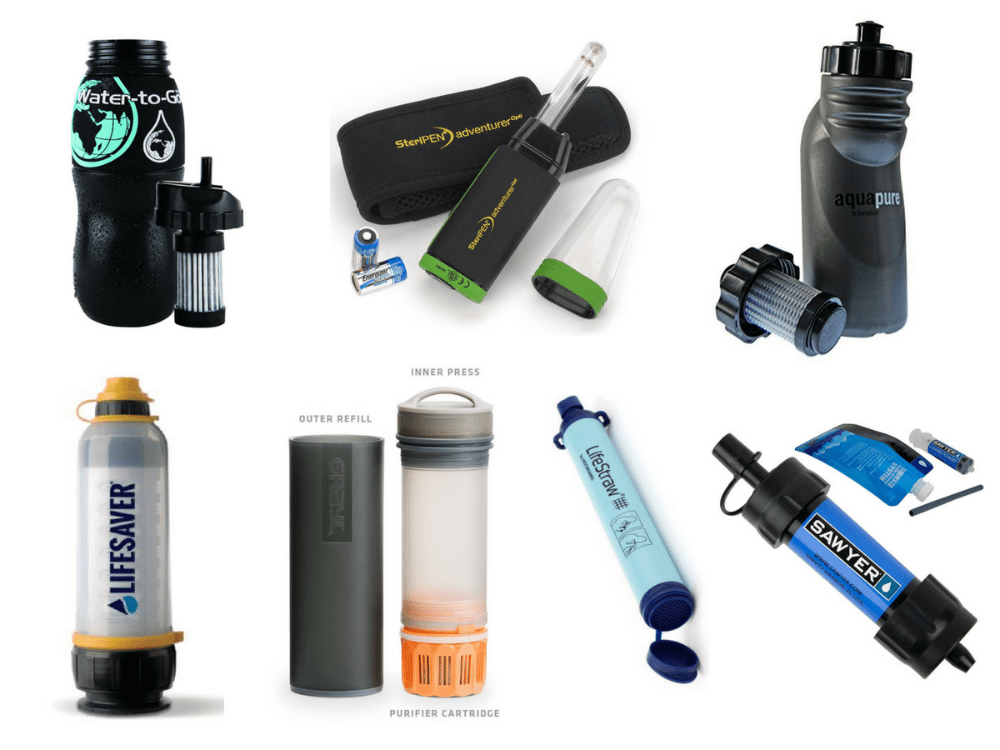8 Smart Ways To Save Money On Water When Travelling
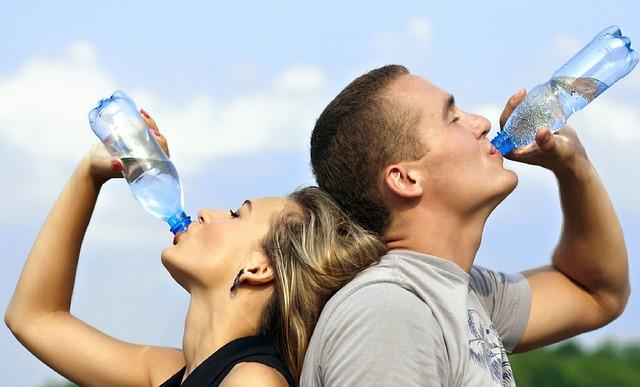
It is a great tragedy of our times that we must spend money to keep ourselves hydrated in today’s world.
This bizarre situation has come about because we’ve polluted our rivers, lakes, reservoirs and other freshwater sources so badly that we must now pay somebody to treat the polluted water to render it safe for drinking again.
When travelling in developing countries in particular, the piped tap water is often so unfit for consumption that the only safe option travellers know about is buying bottled water.
However, this a solution that’s quite expensive, not to mention environmentally unfriendly. Buying larger sized bottles of water helps with saving money but it’s not the only thing you can do to reduce your water expenses.
Here are eight ways that can help you reduce or perhaps even eliminate this crazy expense that no human being should have to deal with.
#1 - Avoid hot (and humid) places
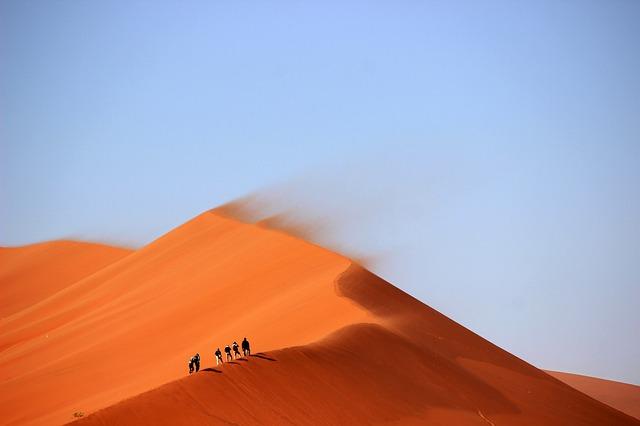
In hot and humid conditions, it often seems as if you can never quench your thirst, no matter how much water you consume. Hot and humid weather forces you to perspire even more than hot and dry weather, because the evaporative cooling process doesn't work as effectively in humid conditions.
Lose less water through perspiration on a daily basis and you’ll have less to replace. That means less money spent on bottled water.
To reduce perspiration when travelling in hot countries, head high into the mountains, where temperatures become a lot cooler. When travelling in temperate climates, conditions should already be ideal for your body to conserve water.
Note that in very cold weather, the dry air must be humidified in the lungs, which can cause you to lose more water (through respiration) than you would lose in more temperate weather. Heavy winter clothing can also increase your workload and cause you to overheat, making you perspire more than you would when temperatures are milder.
Conclusion: Temperate climates are the best for travelling in when your goal is to reduce water expenses.
#2 - Travel slower and buy bottled water in bulk
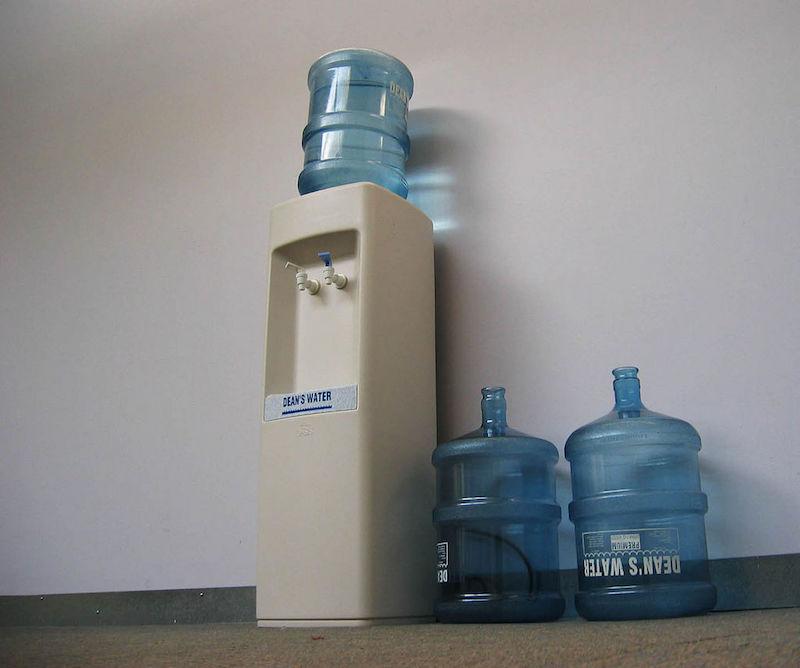
If you’ve been travelling for a while and buying bottled water, you've likely been buying the 1.5L or 2L sized bottles of water. Unfortunately, it turns out that these aren't the most cost-effective option. The 500ml bottles are even less cost-effective and if you've been buying these a lot you’ve really been wasting a ton of your hard-earned cash.
In fact, rather astoundingly, an individual 500ml bottle of water can, in some shops, be more expensive than a 1.5L bottle of the same brand. This happens because the smaller bottles are 'impulse bottles' and cater to people who urgently need a drink on the go, since they're often chilled and more convenient to carry and drink out of (often feature sports caps).
The high demand for such bottles allows them to command a high price. The larger bottles are normally bought by regular shoppers who have are not desperate to quench their thirst and who have a car to easily transport them home for later consumption.
Anyway, the point is that buying things in bulk is cheaper as a general rule (there are of course exceptions) and for water that is certainly the case. If you buy the 5L or even the 20L water cooler bottles, you can save quite a lot of money on water.
The problem is of course, that if you’re travelling fast, such large and heavy water bottles are impractical to carry. That’s why there is an advantage to travelling slowly; you can stay in one place for several weeks and buy a giant cost-effective water bottle that lasts you a week or two.
#3 - Purify the tap water at your lodging
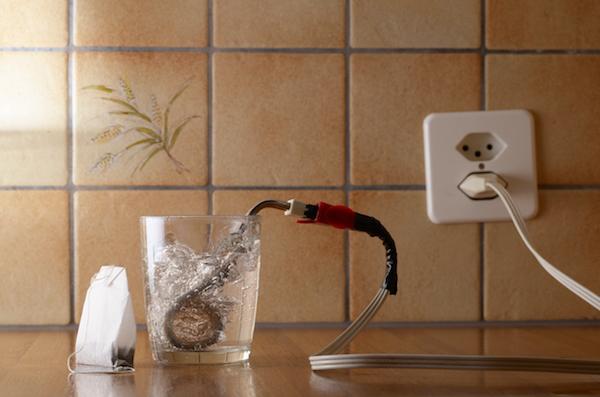
If you can be sure that the tap water in a country is not contaminated with fluoride, chlorine, heavy metals and other harmful chemicals, you can produce perfectly clean, drinkable water by purifying the tap water to kill any harmful micro-organisms (viruses, bacteria, protozoa etc.) that may be present.
Not only will it save you money but purifying the tap water yourself is often a more sensible option than buying bottled water, especially when you bear in mind that, according to some sources, up to 40% of all bottled water is considered to be tap water that may or may not have been treated. People just get fooled by the attractive packaging on the bottle that tries to claim the water came from a pristine mountain spring.
One of the simplest ways to purify tap water while you’re travelling is to just boil the water. If you carry a mini-immersion heaterlike we do, this will always be a cinch. Just make sure you buy one that puts out 1000W or higher, because the less powerful heaters are painfully slow at boiling even a small cup of water.
To use the immersion heater, just plug it in and bring the water to a rolling boil in a ordinary glass, ceramic mug or a stainless steel travel mug (best option) that you can clip onto your backpack and carry everywhere with you.
We also carry a portable stainless steel cooking pot, which allows us to boil larger quantities of water at a time and also to cook full delicious meals in using the immersion heater.
If you want to use a plastic vessel to boil the water in, make sure it’s BPA free to avoid leaching toxins into the water. After bringing the tap water to a brief rolling boil, it’s safe to drink once it has cooled down.
If you’re lucky enough to be staying in a room that provides a kettle, you don’t even need to whip out the immersion heater. Just boil the tap water inside the kettle, let it cool and enjoy the free purified water.
Tip: You can expedite the cooling process by placing the boiled water inside a fridge (if you’re lucky enough to have access to one).
#4 - Choose accommodation that provides free drinking water to guests
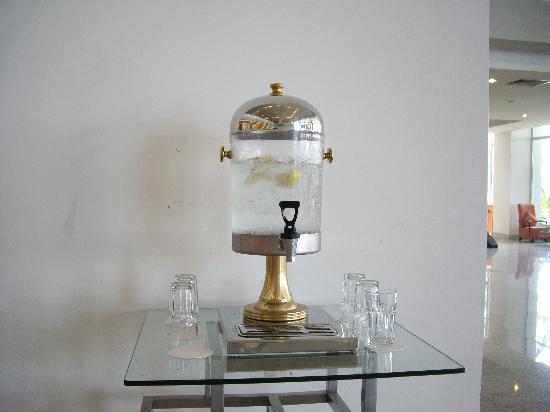
Some hotels, guesthouses and hostels will provide guests with free water, often in the form of a large 20L water cooler that everyone can fill up from.
Some establishments will also hand out a few free small water bottles to their guests each day. Be careful with this one however, as this can often be a ploy to trick you into thinking the water bottles are free, but when you later go to pay for the room, the heavily overpriced water bottles will be tacked onto the bill.
Look out also for hot water dispensers at your lodging. You can fill up a cup with the boiling hot water and allow it to cool before drinking it.
If you can even find one of these free water sources at your lodging, you shouldn’t have to spend any money on bottled water during your stay at the place.
#5 - Buy purified water from vending machines
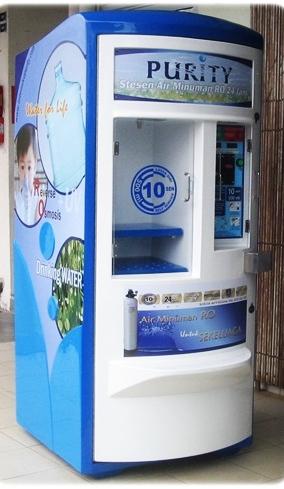
‘Reverse Osmosis’ vending machines are commonly seen throughout many countries. We’ve personally seen them in Thailand, Malaysia, Indonesia etc.
They often appear inside shopping centres, outside convenience stores, at apartment blocks and in several other locations.
These machines purify the normal water supply through a process called ‘reverse-osmosis’.
In this process, the water is passed at high pressure through a dense multi-layered membrane, which removes a high percentage of all minerals (including beneficial ones), organic chemicals and micro-organisms.
They may not however be so effective at removing certain dangerous heavy metals like aluminium and mercury.
To use these vending machines, just bring your own refillable bottle and all you have to do is insert a few pennies into the coin slot, push a button and the machine will dispense a measured amount of purified water into your awaiting vessel.
Buying from these machines is way, way cheaper than buying bottled water. In Thailand for example, you’ll pay only 1 baht ($0.03) for 1 litre from one of these machines. The cost in Malaysia is normally 10 sen ($0.02) for 1 litre and it's similarly cheap elsewhere.
#6 - Fill up at restaurants
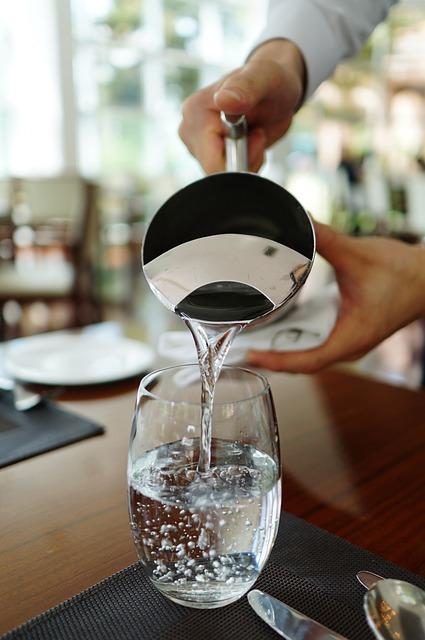
A lot of restaurants around the world give free jugs of clean drinking water with your meal.
If you drink your fill of water while at the restaurant and then ask the waiter to refill the jug, you can pour the entire refilled jug into your own refillable 1.5 or 2L water bottle.
You can even do this several times and fill up 2 or 3 bottles, although the waiter may start to become a little suspicious after the third refill.
It’s best for that reason to do it discreetly under the table when nobody is looking your way. Also, if you’re served a complimentary, tasty, watery soup with your meal, then drink up! That’s free water too.
#7 - Fill up at public drinking fountains
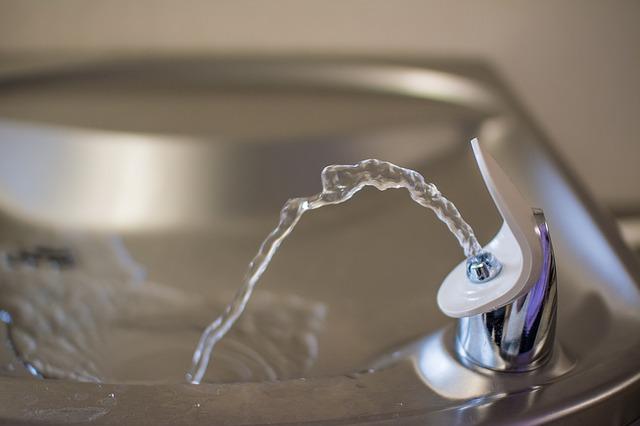
Public water fountains can be found in many airports, transport hubs, shopping centres, parks, libraries, schools etc.
If you have a good immune system, they’re often a pretty safe bet for a free water refill but you really do need to take more care with drinking fountains in developing countries where municipal water supplies are more likely to be contaminated.
Unfortunately, public water fountains have been declining in several countries as the environmentally destructive and costly bottled water craze continues to gather momentum.
Back in the mid 1800s when they were first introduced, attitudes were the total opposite; only the poverty-stricken bought bottled water whereas public water fountains and municipal piped water were associated with prosperity and abundance, as only the rich could afford plumbing.
#8 - Take advantage of natural springs
.jpeg)
Natural springs that dispense pure, clean groundwater from the Earth are a rarity these days on a planet that’s on the brink of global environmental collapse.
The last time we came across a clean natural spring was in the jungle behind Paliem beach in Goa, India.
Here, pure free-flowing water emerged from the rocks and you could refill whenever you wanted.
If you’re lucky enough to be staying near a natural spring during your travels and it’s dispensing pure, uncontaminated groundwater, do take advantage, because it’s the best water you’ll ever drink (and free too).
Final thoughts
We've given you eight ways in this article to cut down on expenses from purchasing bottled water. Now it's up to you to implement some of these alternative ways of procuring that vital elixir of life and see how much money they can save you.
If even just as an experiment, try to survive on the road for an entire week without spending a dime on bottled water. Make use of all the ways to obtain clean drinking water that we've mentioned in this article. Let us know the results!
If you liked this article or found it useful, please share it with other travellers. Do you have any other tips you'd like to share with us for reducing drinking water expenses on the road? Leave us a comment below and we'll reply to you as soon as possible. Thanks for reading!
You may also like:
JOIN OUR LIST
SUPPORT US
FOLLOW US
ABOUT US
Our names are Eoghan and Jili and we hail from Ireland and India respectively.
We are two ardent shoestring budget adventure travellers and have been travelling throughout Asia continuously for the past few years.
Having accrued such a wealth of stories and knowledge from our extraordinary and transformative journey, our mission is now to share everything we've experienced and all of the lessons we've learned with our readers.
Do make sure to subscribe above in order to receive our free e-mail updates and exclusive travel tips & hints. If you would like to learn more about our story, philosophy and mission, please visit our about page.
Never stop travelling!
FOLLOW US ON FACEBOOK
FOLLOW US ON PINTEREST
-lw-scaled.png.png)
